
Stacks Journal
@stacksjournal.bsky.social
A scientific journal designed for ease and ethics. Publishing open-access articles, Special Issues, and entire journals.
Join Us ⬇️
https://www.stacksjournal.org
Join Us ⬇️
https://www.stacksjournal.org
We believe that this transparency increases the constructive dialogue during peer review and decreases the number of reviewer 2's.
We can have rigorous peer review and be thoughtful / kind about it. They're not mutually exclusive!
We can have rigorous peer review and be thoughtful / kind about it. They're not mutually exclusive!
August 28, 2025 at 10:34 PM
We believe that this transparency increases the constructive dialogue during peer review and decreases the number of reviewer 2's.
We can have rigorous peer review and be thoughtful / kind about it. They're not mutually exclusive!
We can have rigorous peer review and be thoughtful / kind about it. They're not mutually exclusive!
Thanks! We find that the collaborative nature helps create higher-quality science.
How well does it work for computing conferences?
How well does it work for computing conferences?
August 28, 2025 at 10:32 PM
Thanks! We find that the collaborative nature helps create higher-quality science.
How well does it work for computing conferences?
How well does it work for computing conferences?
Oh -- very interesting. Thanks for sharing!
August 22, 2025 at 2:41 PM
Oh -- very interesting. Thanks for sharing!
You can read the full article in @stacksjournal.bsky.social at the link below. It's one of the latest articles from the Martes Working Group's Special Issue.
It’s #OpenAccess and went through our new model of peer review that is ethical and transparent.
🧪🦊🌍
🔗 doi.org/10.60102/sta...
It’s #OpenAccess and went through our new model of peer review that is ethical and transparent.
🧪🦊🌍
🔗 doi.org/10.60102/sta...

What is the future for The Martes Complex (Guloninae) in the face of climate change and ecological breakdown? - Stacks Journal
Peer-reviewed research - What is the future for The Martes Complex (Guloninae) in the face of climate change and ecological breakdown?
doi.org
August 19, 2025 at 3:45 PM
You can read the full article in @stacksjournal.bsky.social at the link below. It's one of the latest articles from the Martes Working Group's Special Issue.
It’s #OpenAccess and went through our new model of peer review that is ethical and transparent.
🧪🦊🌍
🔗 doi.org/10.60102/sta...
It’s #OpenAccess and went through our new model of peer review that is ethical and transparent.
🧪🦊🌍
🔗 doi.org/10.60102/sta...
But there’s hope!
Successful mitigation strategies include:
⇶ Landscape-scale forest connectivity
🌳 Climate-aligned reforestation
🦊 Better integration of wildlife into carbon policies
Successful mitigation strategies include:
⇶ Landscape-scale forest connectivity
🌳 Climate-aligned reforestation
🦊 Better integration of wildlife into carbon policies
August 19, 2025 at 3:45 PM
But there’s hope!
Successful mitigation strategies include:
⇶ Landscape-scale forest connectivity
🌳 Climate-aligned reforestation
🦊 Better integration of wildlife into carbon policies
Successful mitigation strategies include:
⇶ Landscape-scale forest connectivity
🌳 Climate-aligned reforestation
🦊 Better integration of wildlife into carbon policies
Why are they so vulnerable to climate change and ecological breakdown?
🌎 Narrow habitat preferences
❄️ Cold-adapted ranges (especially in the fast-warming Arctic)
🌲 Fragmented forests
🔄 Low adaptive capacity
🌎 Narrow habitat preferences
❄️ Cold-adapted ranges (especially in the fast-warming Arctic)
🌲 Fragmented forests
🔄 Low adaptive capacity
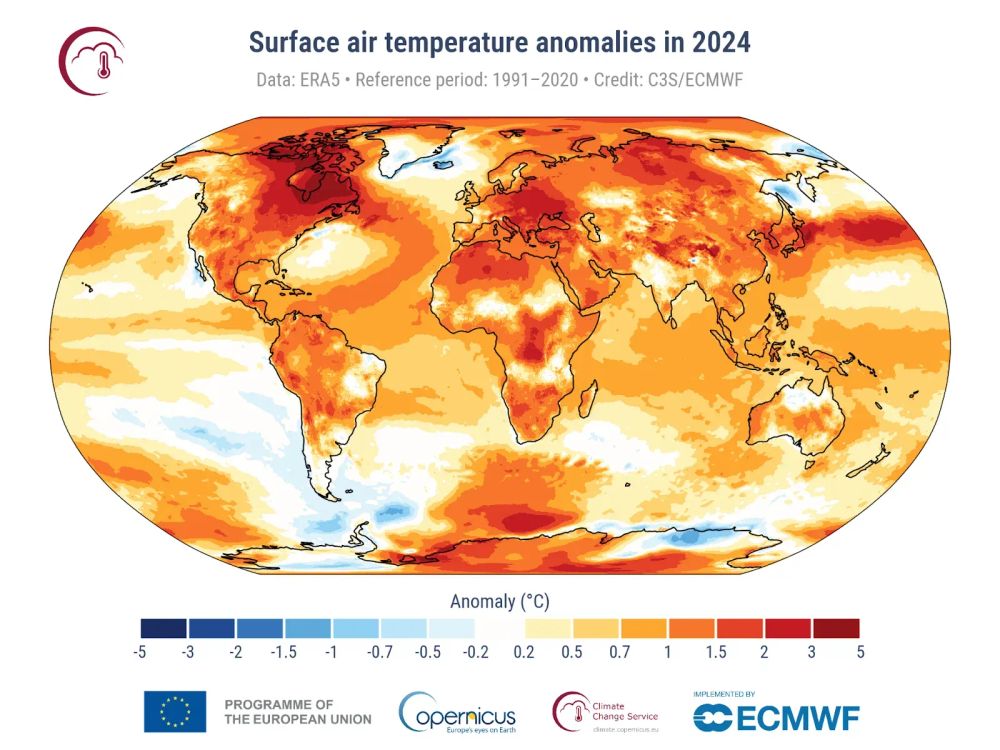
August 19, 2025 at 3:45 PM
Why are they so vulnerable to climate change and ecological breakdown?
🌎 Narrow habitat preferences
❄️ Cold-adapted ranges (especially in the fast-warming Arctic)
🌲 Fragmented forests
🔄 Low adaptive capacity
🌎 Narrow habitat preferences
❄️ Cold-adapted ranges (especially in the fast-warming Arctic)
🌲 Fragmented forests
🔄 Low adaptive capacity
From wildfires to deforestation to the collapse of prey populations, this research maps out how 11 Guloninae species are vulnerable to climate and ecological breakdown.
TLDR: 10 of 11 species are at medium or high risk.
TLDR: 10 of 11 species are at medium or high risk.

August 19, 2025 at 3:45 PM
From wildfires to deforestation to the collapse of prey populations, this research maps out how 11 Guloninae species are vulnerable to climate and ecological breakdown.
TLDR: 10 of 11 species are at medium or high risk.
TLDR: 10 of 11 species are at medium or high risk.
You can read the full article in @StacksJournal.bsky.social at the link below -- it's the latest installment from the Martes Working Group Special Issue.
It’s #OpenAccess and went through our new model of peer review that is streamlined and ethical.
5/5
🔗 doi.org/10.60102/sta...
It’s #OpenAccess and went through our new model of peer review that is streamlined and ethical.
5/5
🔗 doi.org/10.60102/sta...
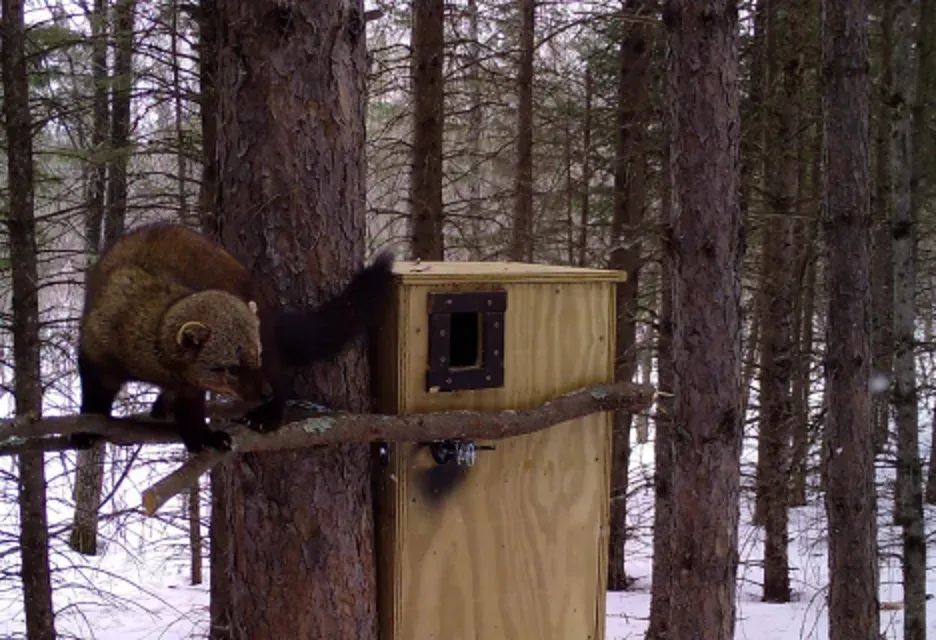
Using temperature loggers to monitor den box use by American martens, fishers, and tree squirrels - Stacks Journal
Peer-reviewed research - Using temperature loggers to monitor den box use by American martens, fishers, and tree squirrels
doi.org
July 24, 2025 at 2:40 PM
You can read the full article in @StacksJournal.bsky.social at the link below -- it's the latest installment from the Martes Working Group Special Issue.
It’s #OpenAccess and went through our new model of peer review that is streamlined and ethical.
5/5
🔗 doi.org/10.60102/sta...
It’s #OpenAccess and went through our new model of peer review that is streamlined and ethical.
5/5
🔗 doi.org/10.60102/sta...
This new technique could be really helpful for other non-invasive monitoring because it is:
💰 Cost-effective: Only one temperature logger needed
🦊 Efficient: Detects when animals are inside, not just nearby
📈 Scalable: Automatable—ideal for long-term monitoring
4/
💰 Cost-effective: Only one temperature logger needed
🦊 Efficient: Detects when animals are inside, not just nearby
📈 Scalable: Automatable—ideal for long-term monitoring
4/
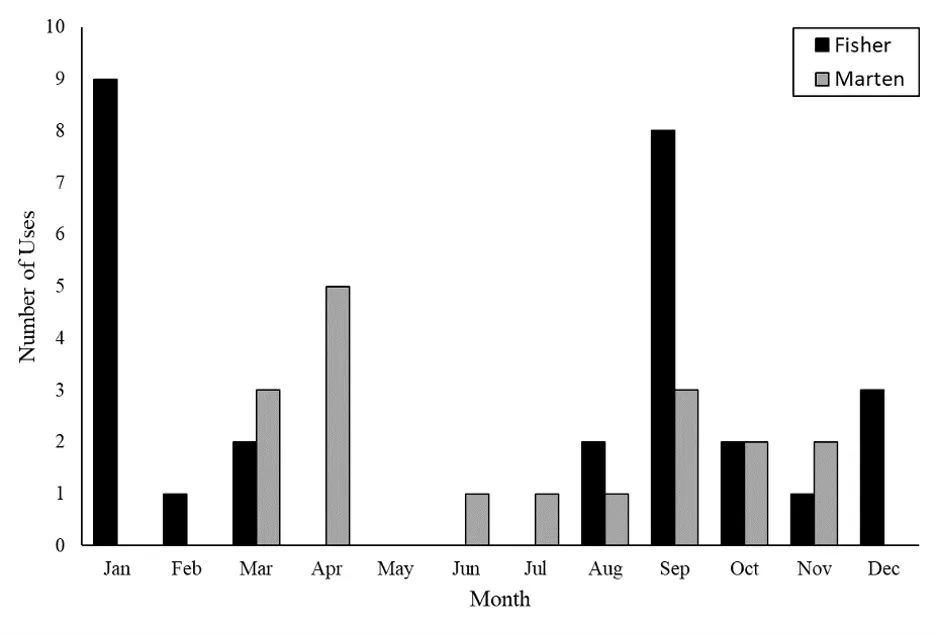
July 24, 2025 at 2:40 PM
This new technique could be really helpful for other non-invasive monitoring because it is:
💰 Cost-effective: Only one temperature logger needed
🦊 Efficient: Detects when animals are inside, not just nearby
📈 Scalable: Automatable—ideal for long-term monitoring
4/
💰 Cost-effective: Only one temperature logger needed
🦊 Efficient: Detects when animals are inside, not just nearby
📈 Scalable: Automatable—ideal for long-term monitoring
4/
Then they matched how temperature changes inside the den boxes were correlated with animals entering, staying, & leaving the boxes.
And they found...
Every fisher and marten visit triggered a consistent temperature spike. Even better—those spikes were distinct enough to tell the species apart!
3/
And they found...
Every fisher and marten visit triggered a consistent temperature spike. Even better—those spikes were distinct enough to tell the species apart!
3/

July 24, 2025 at 2:40 PM
Then they matched how temperature changes inside the den boxes were correlated with animals entering, staying, & leaving the boxes.
And they found...
Every fisher and marten visit triggered a consistent temperature spike. Even better—those spikes were distinct enough to tell the species apart!
3/
And they found...
Every fisher and marten visit triggered a consistent temperature spike. Even better—those spikes were distinct enough to tell the species apart!
3/
Researchers had an interesting idea -- what if you could use the rate of temperature change in den boxes to identify the wildlife visiting them?
So to investigate, they installed 86 den boxes with a temperature logger and remote camera in northern Minnesota and monitored them for three years.
2/
So to investigate, they installed 86 den boxes with a temperature logger and remote camera in northern Minnesota and monitored them for three years.
2/
July 24, 2025 at 2:40 PM
Researchers had an interesting idea -- what if you could use the rate of temperature change in den boxes to identify the wildlife visiting them?
So to investigate, they installed 86 den boxes with a temperature logger and remote camera in northern Minnesota and monitored them for three years.
2/
So to investigate, they installed 86 den boxes with a temperature logger and remote camera in northern Minnesota and monitored them for three years.
2/
You can read the full article and learn more in @stacksjournal.bsky.social at the link below.
It's part of the Special Issue from the Martes Working Group, #OpenAccess, and went through our new model of peer review that is streamlined and ethical.
5/5
🔗 doi.org/10.60102/sta...
It's part of the Special Issue from the Martes Working Group, #OpenAccess, and went through our new model of peer review that is streamlined and ethical.
5/5
🔗 doi.org/10.60102/sta...

Genetic aspects of interspecies hybridization between sable and pine marten based on microsatellite loci data - Stacks Journal
Peer-reviewed research - Genetic aspects of interspecies hybridization between sable and pine marten based on microsatellite loci data
doi.org
July 17, 2025 at 2:16 PM
You can read the full article and learn more in @stacksjournal.bsky.social at the link below.
It's part of the Special Issue from the Martes Working Group, #OpenAccess, and went through our new model of peer review that is streamlined and ethical.
5/5
🔗 doi.org/10.60102/sta...
It's part of the Special Issue from the Martes Working Group, #OpenAccess, and went through our new model of peer review that is streamlined and ethical.
5/5
🔗 doi.org/10.60102/sta...
Why does this matter?
Because how we define species has real consequences and can lead to:
🧩 Misidentification
📉 Misguided conservation
🧪 Missed ecological complexity
This work deepens our understanding of interspecies gene flow in wild mustelids.
4/
Because how we define species has real consequences and can lead to:
🧩 Misidentification
📉 Misguided conservation
🧪 Missed ecological complexity
This work deepens our understanding of interspecies gene flow in wild mustelids.
4/
July 17, 2025 at 2:16 PM
Why does this matter?
Because how we define species has real consequences and can lead to:
🧩 Misidentification
📉 Misguided conservation
🧪 Missed ecological complexity
This work deepens our understanding of interspecies gene flow in wild mustelids.
4/
Because how we define species has real consequences and can lead to:
🧩 Misidentification
📉 Misguided conservation
🧪 Missed ecological complexity
This work deepens our understanding of interspecies gene flow in wild mustelids.
4/
Researchers used 11 microsatellite DNA markers to analyze 246 individuals from Siberia.
The surprise? In 6 out of 11 sable populations, some animals were actually pine marten hybrids.
And – morphology alone couldn’t tell them apart.
3/
The surprise? In 6 out of 11 sable populations, some animals were actually pine marten hybrids.
And – morphology alone couldn’t tell them apart.
3/
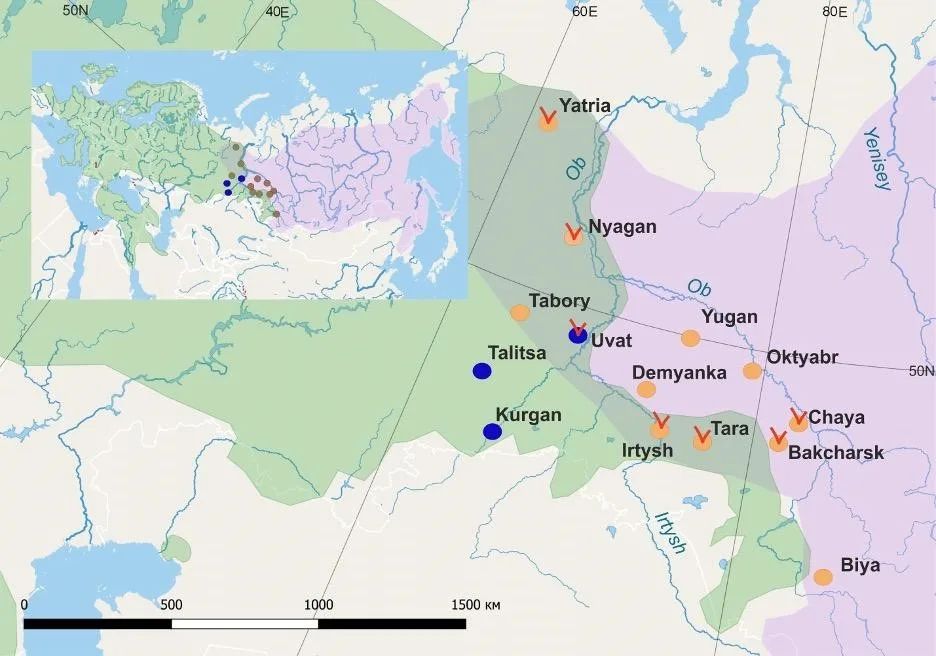
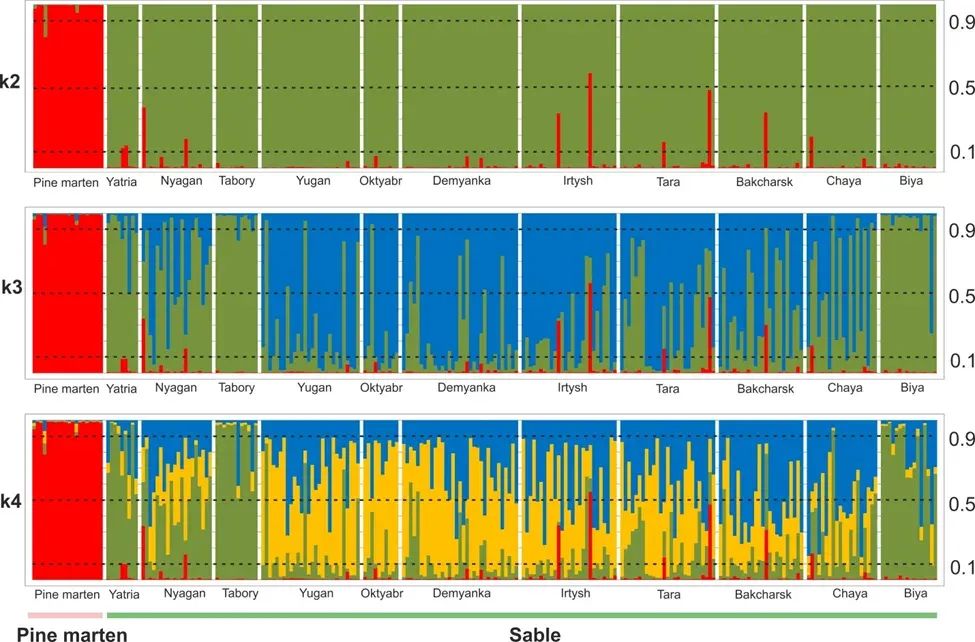
July 17, 2025 at 2:16 PM
Researchers used 11 microsatellite DNA markers to analyze 246 individuals from Siberia.
The surprise? In 6 out of 11 sable populations, some animals were actually pine marten hybrids.
And – morphology alone couldn’t tell them apart.
3/
The surprise? In 6 out of 11 sable populations, some animals were actually pine marten hybrids.
And – morphology alone couldn’t tell them apart.
3/

